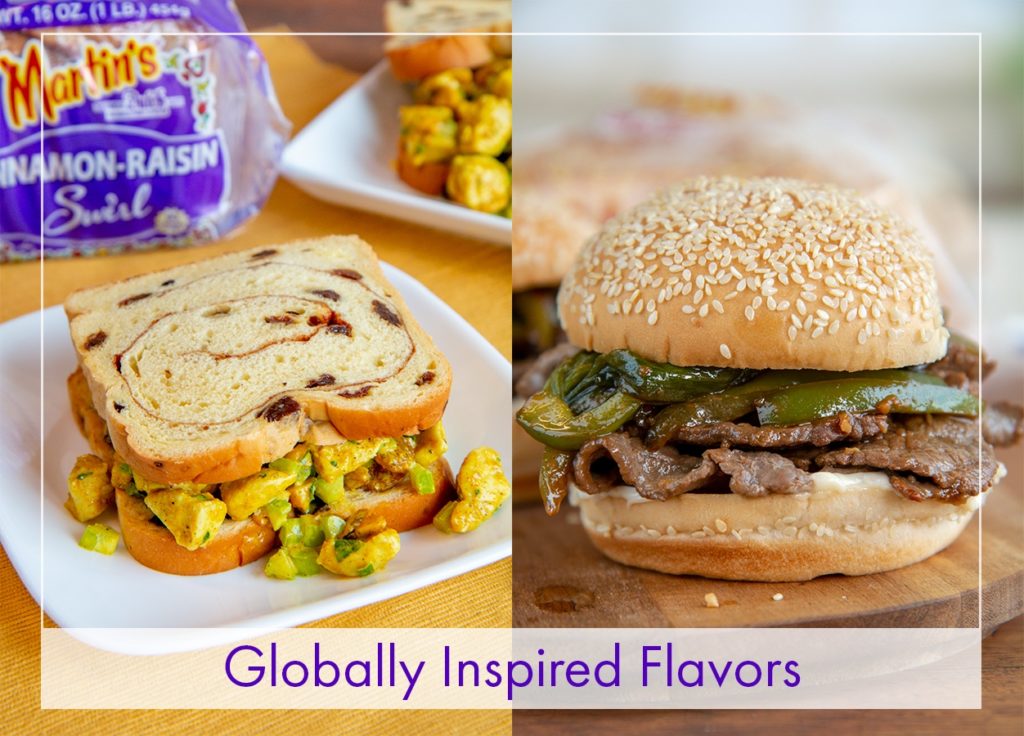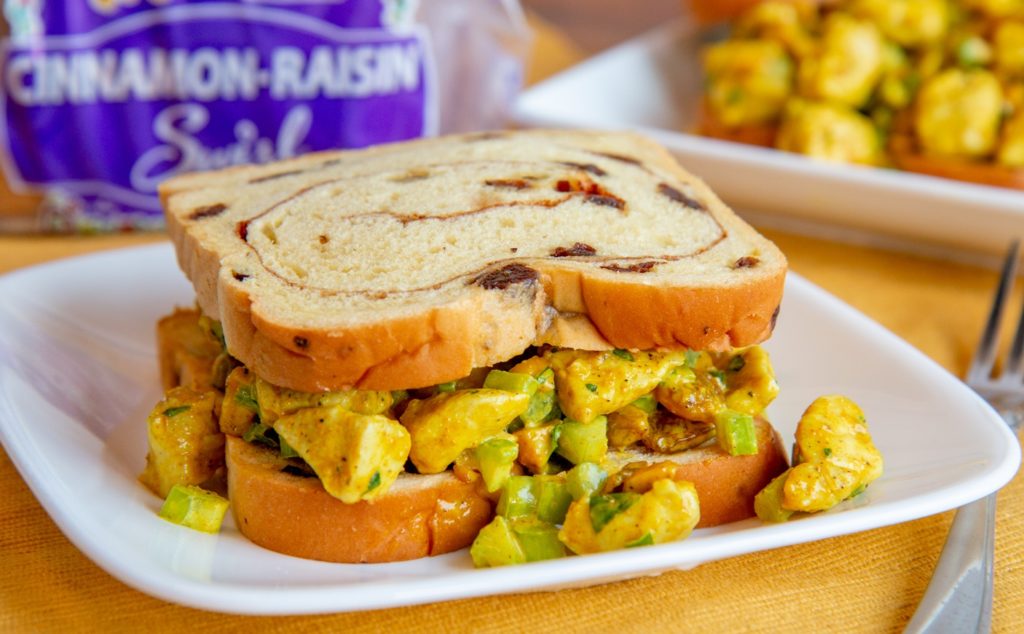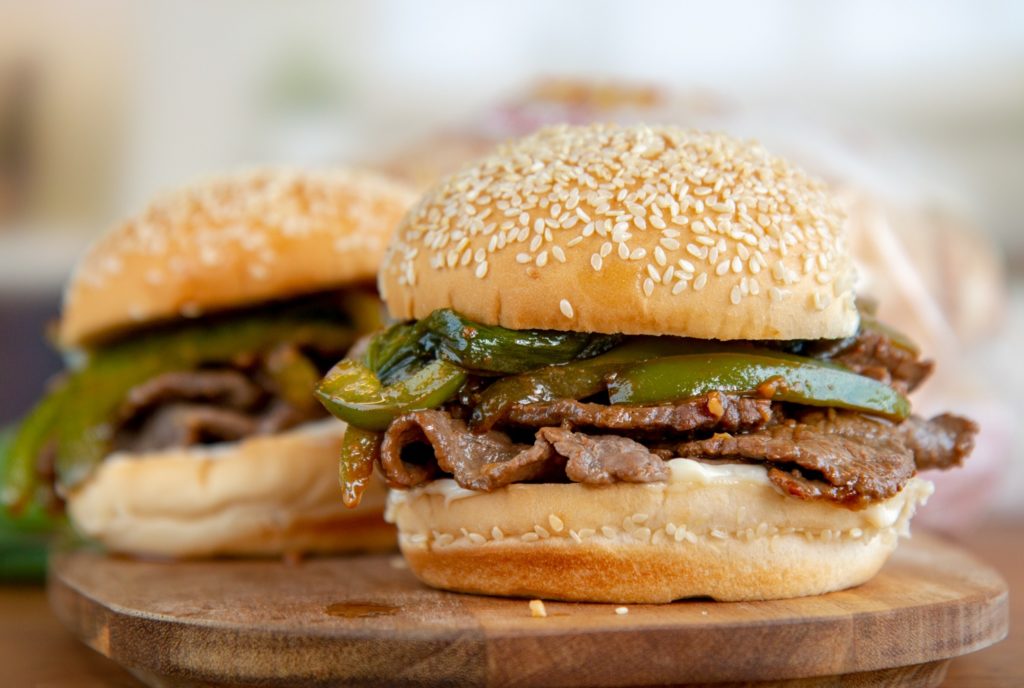
Our nation’s cuisine looks more diverse today than ever before. Visit most major cities and you’ll find a multitude of different ethnic restaurants, along with internationally inspired menu items and “fusion foods” such as Korean tacos or Mexican pizza.
Thanks to this intertwining of cuisines, we are able to experience cultures different than our own and also blend styles into something unique. According to the National Restaurant Association, widespread access to ethnic foods along with more sophisticated palates and an interest in travel among consumers are some of the reasons restaurant chefs are exploring more global flavors. (link) These new trends and flavors are popping up every day, giving us the unique ability to travel the world without ever leaving home!
With tomorrow being World Food Day, what better time to celebrate this global flavor collaboration? (Read more about World Food Day at the bottom of this post.)
Take a look at some internationally inspired flavors trending in today’s culinary world!
Globally-Inspired Flavors
Indian Spices
Indian food, including many variations of curries and rice dishes, are becoming increasing popular in the U.S. These dishes are well-known for having complex flavors due to the long list of spices and usually lengthy cooking process.
Among the many spices used in Indian cooking, some of the most popular are turmeric, coriander, cumin, cardamom, ginger, chili pepper, fenugreek, clove, cinnamon, nutmeg, and black pepper. (The “curry powder” found in most grocery stores is actually a blend of many of the spices list above). Various combinations of these spices are used to make a majority of Indian dishes. Much of the vibrant color from Indian food comes from spices like turmeric, paprika, and saffron.
Try out some of these unique flavors in recipes like our Tandoori Chicken Sandwiches or Curried Chicken Salad on Martin’s Cinnamon-Raisin Swirl Potato Bread (shown below)!

https://potatorolls.com/recipes/curried-chicken-salad-sandwich
Korean Condiments and Dishes
Korean flavors are appearing more and more frequently in restaurants and kitchens today. Ingredients such as kimchi (Korean-style fermented cabbage) and gochujang (Korean red chili paste) are finding themselves incorporated into many unique dishes. Check out this recipe for Korean Fried Chicken Sandwiches by blogger Shared Appetite, featuring both of these popular flavors.
Many Korean prepared dishes are also becoming more mainstream as palates expand and new trends take shape. One of these popular dishes is bulgogi—Korean style barbecue in which thinly sliced beef is marinated, along with peppers and green onions, in a mixture of soy sauce, garlic and ginger, then grilled.
Try it for yourself in this recipe for Bulgogi-Style Pepper Steak Sandwiches on Martin’s Big Marty’s Rolls!

Try the recipe!

BBQ, Sandwiches
Bulgogi-Style Pepper Steak Sandwiches
https://potatorolls.com/recipes/bulgogi-style-pepper-steak-sandwiches
Mediterranean, Middle Eastern, & North African Flavors
These three neighboring regions, despite their own unique cultures, share many similarities in terms of cuisine. Ingredients like tahini and chickpeas, which are common in this area, have already been popularized in the United States through foods like hummus. Another common chickpea-based food is falafel, or deep-fried balls made from ground chickpeas, that is popular in the Egypt and the Middle East. Try it out in this recipe for Falafel Sliders with Avocado Hummus!

According to Food Business News, “Sixty-six per cent of U.S. consumers are interested in Middle Eastern foods at restaurants, and growth of Middle Eastern cuisine on U.S. restaurant menus grew 32% between 2015 and 2017.” (link)
Another similarity between these regions is the tradition of cooking meat on a rotating spit (or rotisserie). This preparation method is the basis for Middle Eastern shawarma, Greek gyros, Turkish döner kebabs, and even Mexican tacos al pastor (introduced by Lebanese immigrants), any of which can readily be ordered across the U.S. today.
Another popular ingredient that is making its rounds in global culinary circles recently is North African-based harissa. Harissa is a spicy aromatic chile paste blended with a variety of other herbs and spices. It is common in the Maghrebi region of Africa, particularly Tunisia and Morocco. It is traditionally used to flavors dishes such as tagines, but has recently become recognized for its versatility as a spread and powerful flavoring agent across the globe.
Sriracha
While this condiment has been trending in the U.S. for several years now, it still remains a widely popular flavor. Due to its unique tangy and spicy flavor, this Thai-style chile sauce it often used in place of other hot sauces to put an Asian spin on recipes. Try using it in recipes like these Honey Sriracha Chicken Sliders and Asian Slaw Dogs with Sriracha-Mayo.

World Food Day
World Food Day is recognized around the world each year on October 16. It was established by the Food and Agriculture Organization of the United Nations in an effort to raise awareness of the worldwide issues of poverty and hunger. This year’s theme, “our actions are our future,” addresses problems such as food waste and sustainability.

As a conscientious consumer, you can help contribute to the goal of #ZeroHunger by 2030 by considering some of the following tips:
- Love your leftovers – save leftover food for later, or repurpose it into another meal.
- Store food wisely – don’t let your food go to waste.
- Put food waste to good use – try composting.
Learn more about World Food Day at: http://www.fao.org/world-food-day.
Sources:
https://www.getflavor.com/top-10-trends-2018
https://www.foodbusinessnews.net/articles/11712-six-flavor-trends-shaping-the-food-service-industry
https://www.restaurant.org/News-Research/News/What%E2%80%99s-Hot-Top-10-foods-for-2018
Our latest content, delivered straight to your inbox.
Be the first to hear about our newest recipes, tips, and company updates!





